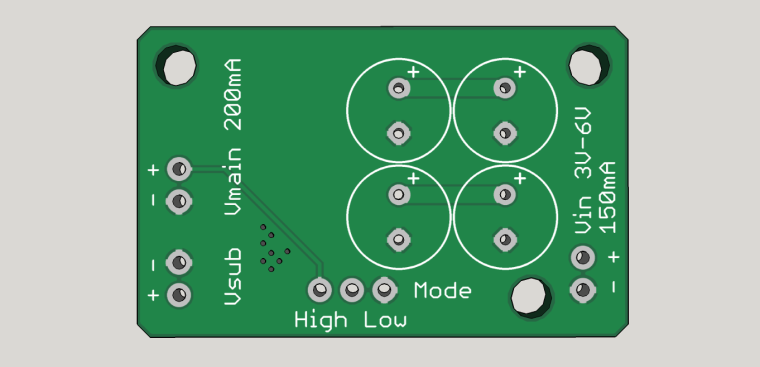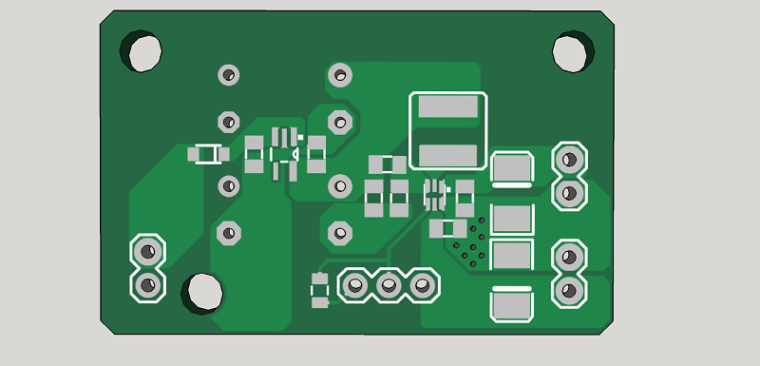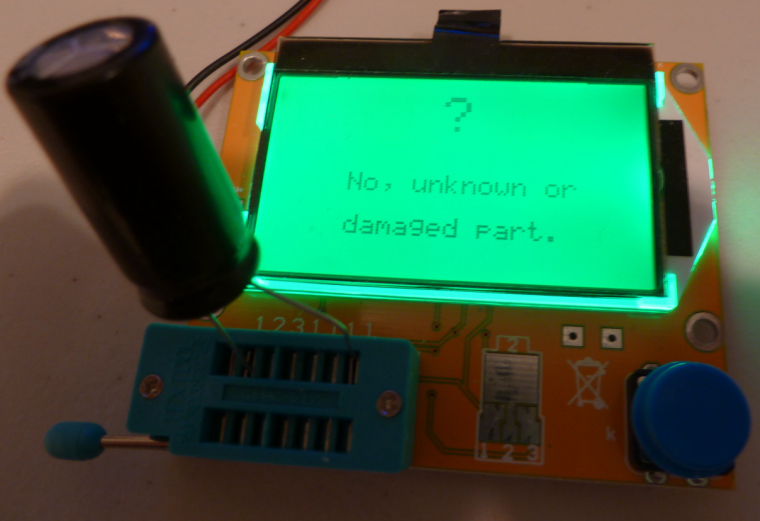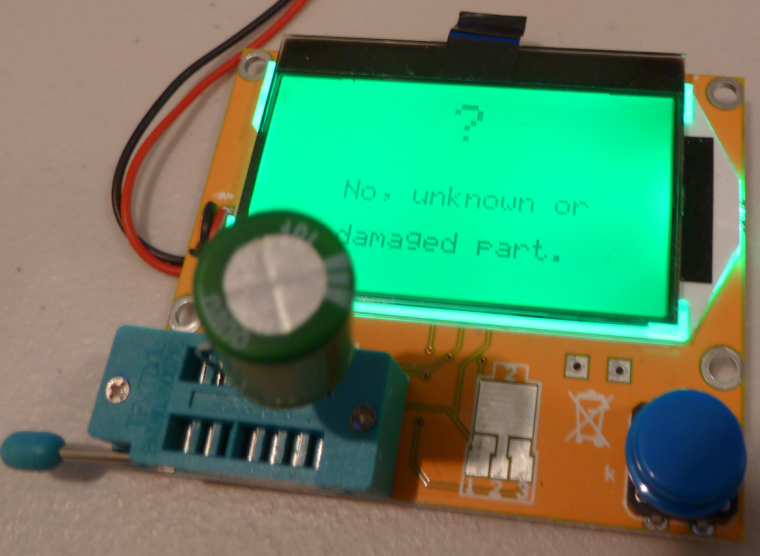How best to find the "best" small solar panel of a particular size?
-
@ceech
Well, I may end up buying it from ceech then. Even properly aligning it onto the solder pads becomes difficult. I really struggled with the BQ25504. Not saying it can't be done, but just that it requires a lot more skill. -
Those are the boards BTW


-
And if it is too tall, still, only two capacitors can be installed in horizontal position, or even just one.
-
And if it is too tall, still, only two capacitors can be installed in horizontal position, or even just one.
@ceech How about a flat supercap like this:
https://www.digikey.co.uk/product-detail/en/vishay-bc-components/MAL219691252E3/4699PHBK-ND/5015883
There is no need to have two in my view unless you want to raise voltage. One flat to make the board compact may be enough.
-
Flat ones are nice. Nice package. High internal resistance, therefore low current. The double cell 15F flat capacitor can only supply 70mA.
-
This is great. :+1: Maybe more people will start playing with this stuff if they can buy inexpensive pre-made boards from ceech. The more, the merrier. :)
-
Flat ones are nice. Nice package. High internal resistance, therefore low current. The double cell 15F flat capacitor can only supply 70mA.
@ceech said iThe double cell 15F flat capacitor can only supply 70mA.
It should be enough if not using nrf24l01+ pa lna or rfm69HW. In this case perhaps, it would be better to have 150mA at least to cover those transmitters?
I like the size - It is really flat. -
@ceech said iThe double cell 15F flat capacitor can only supply 70mA.
It should be enough if not using nrf24l01+ pa lna or rfm69HW. In this case perhaps, it would be better to have 150mA at least to cover those transmitters?
I like the size - It is really flat.@alexsh1 said in How best to find the "best" small solar panel of a particular size?:
@ceech said iThe double cell 15F flat capacitor can only supply 70mA.
It should be enough if not using nrf24l01+ pa lna or rfm69HW. In this case perhaps, it would be better to have 150mA at least to cover those transmitters?
I like the size - It is really flat.If you start to get choosy, that's when it's time to start making your own boards. It's easier than you might think. Otherwise, you just have to accept that the off-the-shelf stuff will never be exactly what you want.
It's really too bad there isn't more of a universal PCB format that's easily edited, so you can simply start with a board that's close to what you want and just customize it a bit (the way one might with, say, software). For instance, even just changing LDO's--unless the new LDO has exactly the same land pattern--can necessitate redoing the board. No problem if you're the original designer, but it's a PITA if you aren't.
-
I received the Chinese supercaps today. My "el cheapo" component tester is, I guess, too cheap, because it can't identify them:


So, if anyone has suggestions for a good capacitor tester, let me know.However, I did plug the first one into my solar node after charging it ,and, so far it's not holding it's charge very well at all. I'll try the green one next.
-
I received the Chinese supercaps today. My "el cheapo" component tester is, I guess, too cheap, because it can't identify them:


So, if anyone has suggestions for a good capacitor tester, let me know.However, I did plug the first one into my solar node after charging it ,and, so far it's not holding it's charge very well at all. I'll try the green one next.
-
@NeverDie I just watched this video:
Is this what you have been looking?
-
Well, so far the green supercap isn't holding its charge any better. I'll leave it in-circuit for two or three days, though, and see if that improves. It's encouraging that the rate of voltage decrease is decreasing. Some supercaps apparently improve their ability to retain charge if they are forced to hold a charge long enough, though I have no idea why that is. For instance, some capacitor leakage test protocols call for holding a capacitor at its rated voltage for 72 hours before running the leakage test.
-
Well, so far the green supercap isn't holding its charge any better. I'll leave it in-circuit for two or three days, though, and see if that improves. It's encouraging that the rate of voltage decrease is decreasing. Some supercaps apparently improve their ability to retain charge if they are forced to hold a charge long enough, though I have no idea why that is. For instance, some capacitor leakage test protocols call for holding a capacitor at its rated voltage for 72 hours before running the leakage test.
@NeverDie you are right - Nick Gammon states exactly the same that overtime leakage "improves". A new cap has to be broken in before leakage is measured.
ESR measurement - I have no idea if it is possible to measure it and how. I think right now we are going down deep into the physics in order to do that
-
For more normal capacitors (though apparently not for 10F supercaps), the little gizmo I showed in the pictures above does measure and display the ESR. That's one of the main reasons I purchased it. It's probably not hard to measure either. Measure the unloaded voltage. Then measure the voltage under, say, 1 amp of current. The second voltage measurement will be less, and from that you can calculate the ESR. At least, that's how I'm guessing it's done. Except you'd near to do a near instantaneous measurement, because the longer you drain the current, the more the voltage goes down for that reason too, not just ESR.
-
Incredibly, I may have to resort to the Julien Ilett method of measuring capacitance. None of the meters or testers I've seen thus far handle supercapacitor capacitance (e.g. 10F). So, thanks for posting the video! Very timely.
-
Incredibly, I may have to resort to the Julien Ilett method of measuring capacitance. None of the meters or testers I've seen thus far handle supercapacitor capacitance (e.g. 10F). So, thanks for posting the video! Very timely.
-
@NeverDie the old fashioned way! ;-)
Glad we are doing or reading about the same things at the same time.How long does it take for your device to measure ESR? Did you try a normal capacitor, I.e. 100uF?
@alexsh1 said in How best to find the "best" small solar panel of a particular size?:
How long does it take for your device to measure ESR? Did you try a normal capacitor, I.e. 100uF?
Yes. About 5 seconds.
[Edit: that includes the time it also takes to measure capacitance. It does both measurements (including part type identification) at the push of the button. ]
